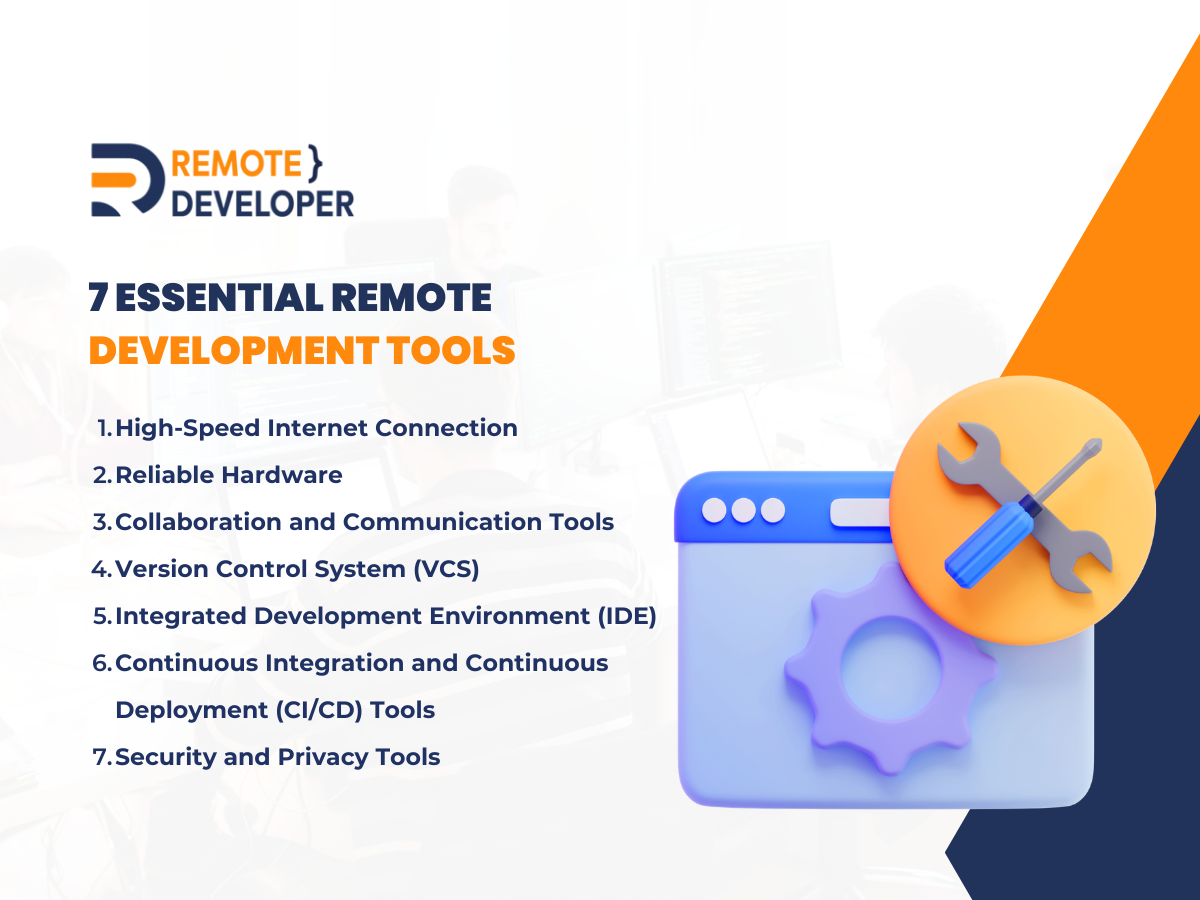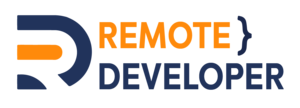There has been a rise in remote workers in the past couple of years due to the global pandemic. While the crisis itself has already passed and people are back to their normal lives, remote work is here to stay. Naturally, developers working from home need reliable remote development tools to effectively carry out their work.
There are plenty of advantages to having a remote development team. However, you need a good set of remote development tools to realise this. So, in this article, we will share the kinds of tools you will need to invest in so that you can flexibly work from home and still produce high-quality tech projects.
Importance of Having the Right Tools for a Remote Developer
Every person has a set of tools to do their craft—this is true even for remote developers. In fact, for developers working from home, remote development tools assist not only in doing their work but also enable them to collaborate with teammates from different parts of the world.
Of course, there are plenty of tools available online. But because there are so many options, there is a small chance that the tools you invest in will not be good. Naturally, the best way to avoid this is by carefully selecting the remote development tools in the first place. As such, when remote workers are provided with appropriate tools and resources, there is a strong likelihood of witnessing a twofold increase in their level of engagement.
In short, the right tools will be a game-changer for you. They can help you stay productive, stay connected with your team, and stay on top of your game, regardless of whether you are working from home or in any part of the world.
7 Essential Remote Development Tools
With that said, let us get into the seven essential remote development tools every work-from-home developer needs. Here, we list the things that you will need instead of giving a list of brands or companies, so you have more leeway to select which one works for you.

High-Speed Internet Connection
On top of the list of remote development tools that you need to invest in is a high-speed internet connection. Since everything is done online, this is the most basic necessity that you need to cover.
A reliable and high-speed connection enables you to seamlessly interact with a remote development server. This enables you to transfer code, compile software, and test applications with minimal to zero possible complications. This is especially important if the software development tools that you use are accessible via the Internet.
More importantly, having a high-speed internet connection provides you with a couple of other benefits as well:
- It enables you to work with large data sets and files without any lag issues.
- It enables you to have smooth access to cloud-based platforms, so you can collaborate with your team in real-time.
- It ensures that you are present seamlessly during virtual meetings, so you do not miss anything.
- It enables you to share large files with your teammates easily and without delay.
- It ensures that all your work is automatically backed up.
- Lastly, it improves employee satisfaction and productivity.
Reliable Hardware
Another basic must-have on your list of remote development tools is reliable hardware. As a remote developer, working from home is great. However, occasional issues like technical difficulties are one of the downsides to that.
While you may have experience fixing computers, if the hardware that you are using is company-issued, it may not be a good idea. On the other hand, even if you own it, it will still affect your productivity during working hours. To avoid this as much as possible, you need to invest in hardware that is well-made and reliable.
Another reason why reliable hardware is important is because of the manual testing tools that you are using in your software development project. Tests need a stable environment to have an accurate and consistent evaluation of software. Dependable hardware minimises the risk of false positives or false negatives during the testing phase.
So, when looking for hardware, you need to consider the following things:
- Does it perform smoothly?
- Do its specs ensure that there will be minimal chances of crashes or technical glitches?
- Are you able to easily use your webcam and microphone and connect to the internet?
- Are the data safety measures in place enough to keep your data protected from hardware failures?
- Is it sturdy enough that you do not need to go to a technical support service provider immediately?
Collaboration and Communication Tools
In the past, since everyone was working on-site, collaboration and communication were quite easy. However, since a large chunk of people is now working from home, tools that enable you to work and communicate with your team in real-time have become very important.
This is especially true if you are a remote developer who is collaborating with members who are not even in the same country. Software development projects require consistent collaboration and plenty of meetings, so you need easy-to-use remote development tools for communication to help you do that.
Due to the forced work-from-home arrangements caused by the pandemic, people are already quite familiar with a lot of communication tools. Some may only be stand-alone, but there are also remote development platforms that have a host of tools for collaboration and communication.
Depending on the needs of your team, these platforms can help enhance your team’s work, streamline processes, and enable every member to help each other out. Of course, you can also opt for stand-alone tools due to your team’s preference, such as:
- Video conferencing software
- Team chat software
- Work management software
- File sharing platform
- Remote desktop software
Version Control System (VCS)
Next on your list of essential remote development tools is a VCS. This enables you to keep track of any changes in the software’s code, files, or any other digital assets. This is especially handy if you are collaborating with a lot of team members since you can keep an eye on all of the assets.
But, it should also be able to do more than just manage and track. The VCS that you choose should help you develop your software faster by flagging potential complications so you can immediately fix them. Moreover, your chosen VCS should enable you to do the following things:
- Maintain visibility of all assets.
- Minimise potential file conflicts and wasted effort.
- Enable team members from around the world to seamlessly collaborate.
- Accelerate product delivery by resolving possible complications early in the development phase.
Integrated Development Environment (IDE)
An IDE is one of the most important remote development tools that a developer must have, especially when working from home.
An IDE is a software platform that helps you create the software itself. It is a tool where you have the space to write and debug the code that you write. In addition, it also has a host of remote development plugins that are available for your convenience.
Most IDE tools have the following components:
- A code editor is the most basic component for any idea since this is the one that enables you to write the code itself.
- A built-in compiler that runs your code in the same environment that you have designed it for to check if it works and if there are any complications.
- A set of debugging tools to detect any errors at the source code level.
- Class and object browsers to easily inspect items within the program.
- The build automation tool helps prepare the code for execution and packages it for implementation after you are finished writing.
Continuous Integration and Continuous Deployment (CI/CD) Tools
In your list of remote development tools, CI and CD are like little super-helpers for remote developers. They help you work seamlessly with your teammates, even though you are not a part of them.
Think of it this way: Since you and your team are working on different sides of a puzzle, which is the software development project, each of your pieces has to fit somehow. CI/CD tools act like the glue that makes them stick together and make it easy to understand.
One way to ensure this is to use a remote development environment since it provides you and your team with a consistent and controlled space. There is a separation between the development and production environments; this minimises any potential errors and provides you with the ease to conduct automatic testing, debugging, and deployment later on.
With that said, a CI/CD tool enables you to achieve the following:
- Continuously test code to check for bugs
- Allow you to write shorter code
- Release new software and corresponding updates
- Get real-time customer feedback to pinpoint common issues and resolve them
- Ensure quality to help maintain customer satisfaction
Security and Privacy Tools
Because everything you use for your software development project is now online, you are more open to potential security vulnerabilities. Just a few months ago, there was news of data breaches at big tech companies. It just goes to show that not everyone is safe online.
Luckily, there are ways to minimise these security vulnerabilities. In this case, remote development tools that are designed to protect the security and privacy of your organisation
With that said, here are the top security tools you need to have as a remote worker:
- Digital wallet
- Digital identity monitoring
- Password managers
- Two-factor authentication process
- Anti-malware software
- VPN services
- Backup solutions
- Privacy screens
- Secure computers and mobile devices
- Network Hardware
Even if the organisation that you work with has cyber security measures in place, as an individual, it is still important that you invest in these security tools not only for your work but also for your personal life.
Conclusion
All in all, the right remote development tools can make a difference for you and your team. Working on a software development project requires active collaboration, but if you are working from home, that may not feel like it, and it can feel daunting. Thankfully, modern technology has breached that distance gap and enabled us to seamlessly work wherever we are.
Ready to learn more? Check out our blogs to get more tech insights.

